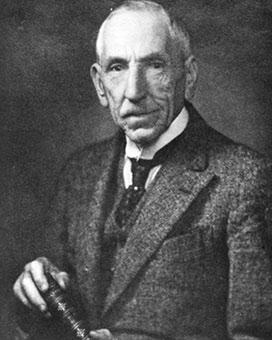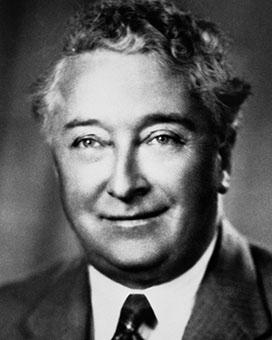Born in Melbourne in 1883, Stanley Melbourne Bruce was the youngest of 5 children. When he was 10 years old, Paterson Laing & Bruce, the importing firm on which the family wealth depended, became one of many colonial casualties of the 1893 London bank collapse. The family mansion in Toorak was sold, and Bruce was taken from school. His father had rebuilt the firm 4 years later and bought out his partners. Bruce was then enrolled at Melbourne Grammar, where he captained the cricket, football, athletics and rowing teams. In his final year, he captained the school itself.

British newspapers provided enthusiastic coverage of Bruce's visit to England for the 1923 Imperial Conference. NAA: A1486, 1, p.17
His father died in 1901, the year that Bruce finished school. After a year working in the family firm, Bruce moved to England with his mother and sister. Bruce entered Trinity Hall at Cambridge University in January 1903, and his achievements there were capped with a rowing Blue. He graduated in 1906, and was admitted as a barrister. He continued to coach for Cambridge and was known on the tow-path as ‘Bruggins’.
In 1913, Bruce married Ethel Dunlop Anderson, who was from Melbourne, and the couple made their home in London. A year later Britain declared war on Germany and Bruce served as a captain in the British Army. He was awarded the Military Cross and the Croix de Guerre avec Palme for his actions on Gallipoli in 1915. Wounded on Gallipoli, he was invalided to London.
In 1917, the Bruces returned to Australia so that Bruce could take over as general manager of Paterson Laing & Bruce. They reached Australia when attempts by Prime Minister William Hughes to introduce conscription had been rejected in a referendum. This divisive issue produced violent clashes like those in Melbourne, home to leading pacifists like Vida Goldstein.
As a decorated hero of Gallipoli, Captain Bruce – although no great orator and with a decidedly British manner – was involved in Australia’s recruitment campaigns for the remaining years of the war. He became the Nationalist Party’s candidate in the seat of Flinders, in Victoria. By the time the war ended, Bruce was a Member of the House of Representatives for Flinders, having won a by-election on 11 May 1918.
In 1921, the Bruces spent 9 months on business in London. Their return in September was delayed when William Hughes pressed Bruce into service in Geneva, as Australia’s delegate to the General Assembly of the newly established League of Nations. They reached Australia late in October, to a warm welcome from Hughes and an offer of the Trade and Customs ministerial portfolio. However, Bruce was more interested in succeeding Joseph Cook as Treasurer, an ambition he achieved on 21 December. Typically firm and efficient in the role, one of Bruce’s early proposals was to reduce the salaries of members of parliament.

Note from WM Hughes to SM Bruce welcoming him as Treasurer on 21 December 1921. NAA: A1492, 1, p. 9
The 8th Parliament sat for the last time on 12 October 1922. When the 9th parliament assembled the following year, Bruce replaced Hughes as prime minister.
Sources
- Edwards, Cecil, Bruce of Melbourne: A Man of Two Worlds, Heinemann, London, 1965.
From the National Archives of Australia collection
- Correspondence between Prime Minister WM Hughes and SM Bruce, 1921–23, NAA: A1492, 1
- Papers relating to negotiations between the Nationalist Party and Country Party in 1923, NAA: A1493, 1
- Volume of press writings concerning visit to Imperial Conference, 1923–24, NAA: A1486, 1





